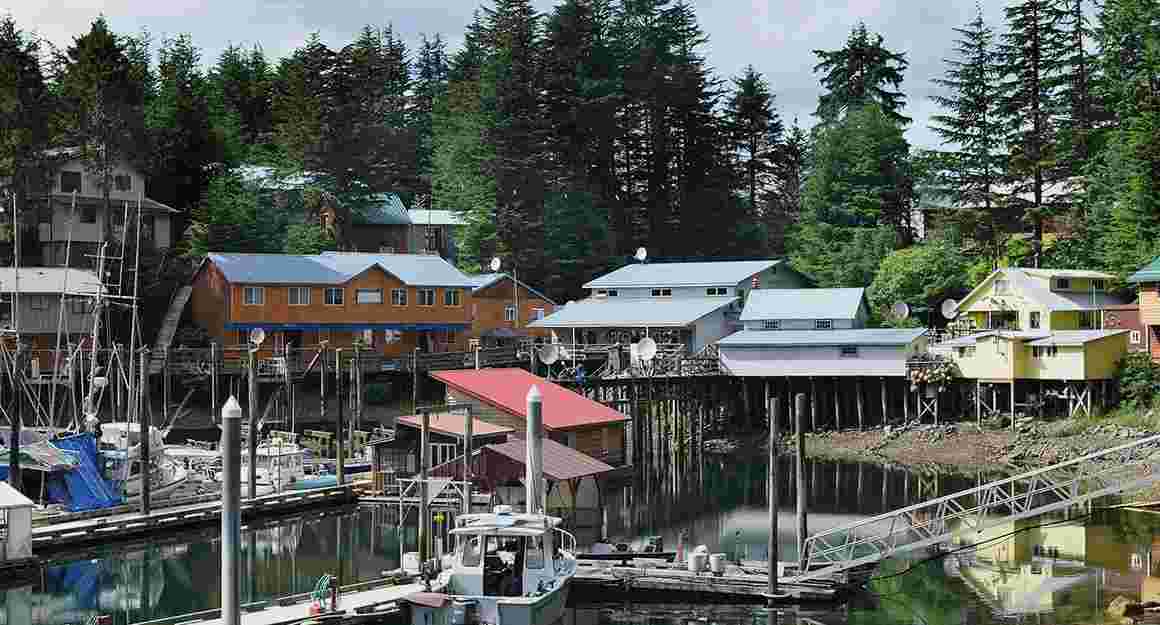Sailing around the world: Alaska
An English couple is voyaging the world on a Bavaria Ocean and has spent the last two years exploring Alaska.
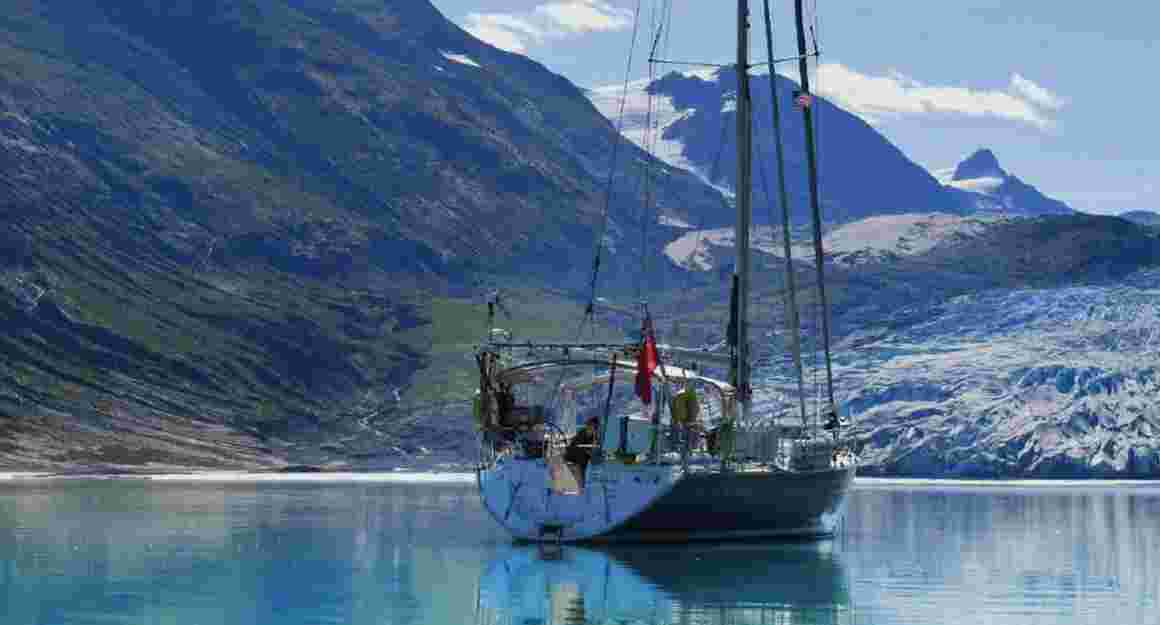
An Elfin Cove full of hippies, at least so they say in Hoonah. An abandoned gold mine with an ancient spirit. Whales and wolves, bears and otters. Glaciers, mountains, dense woods – Alaska, it seems, has it all. And then some more. However, it is not your typical yachting destination as the weather, and the waters, can indeed become quite outrageously angry. Tidal overfalls in the narrows along the Inner Passage, sudden squalls thundering down the mountains, chunks of ice floating around Glacier Bay. Not a sailing area for the green, nor the anxious: „The Last Frontier“, it is also called. Those who do venture here, and take upon them a long and not easy journey, are, on the other hand, richly rewarded. This is what Marie and Dave Ungless found, who spent two years in Alaska during their ongoing, eastabout circumnavigation that started out quite by chance.
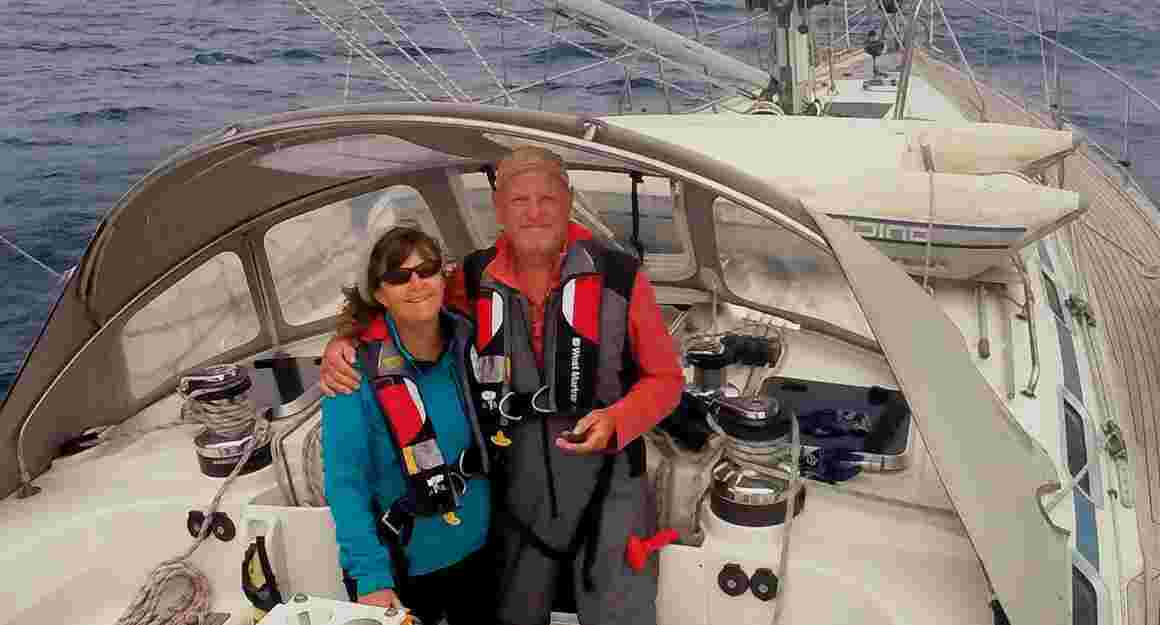
From Dubrovnik around the world
“We bought our boat, a 15‐metre Bavaria Ocean named Sänna, one of the few with an aft cockpit, in Dubrovnik and then sailed south from there,“ explains Dave. After spending time in Greece, Italy and Turkey, the winds favoured them to sail south for the Suez Canal. Sailing down the Red Sea took six months, with „desert anchorages, remote reefs and the indisputably friendly Muslim culture,“ as the couple write on their weblog, which continues: „An unplanned and lengthy winter anchor in Yemen, carrying out sail repairs after a savage storm in the southern Red Sea, meant we were then well prepared to cross the Indian Ocean to Sri Lanka, leaving from Sallala, Oman in February 2008 after arriving there from Aden in Yemen. Our two thousand mile voyage in the north‐east trade winds was our first long distance ocean crossing and we came to realise that both our vessel and ourselves were capable of sailing much further.“
From Sri Lanka to Thailand
And sail further they indeed did. After five months in Sri Lanka, the trade winds were favourable for sailing across the Indian Ocean, through the Andaman and Nicobar Islands to Malaysia and Thailand. It was there that the two finally decided to carry on and attempt an unusual circumnavigation eastwards against the prevailing winds and currents. First, however, they spent two years in South‐East Asia. During this time, they also made a refit and carried out further modifications to the boat.
Eventually, they set sail again for Singapore, Borneo and the Philippines, where they once more spent a lot of time „losing ourselves in an idealistic lifestyle, exploring this incredible part of the world and turning even more native. Sailing further south through remote areas of eastern Indonesia to Darwin, Australia in 2010 brought us back into the first‐world and to western culture. Storm damage from Cyclone Carlos delayed Sänna in Darwin before we decided to beat against the eastern trade winds, along the Great Barrier Reef to Brisbane, followed by a particularly tough crossing to New Zealand in 2012. We’d reached our half‐way destination and took a well‐earned breather at our furthest point south.“
From New Zealand, it was straight to Alaska. Well, nearly. The direct route would have been an incredible 9000 miles diagonally across the Pacific Ocean, from west to east and from the southern to the northern hemisphere but convenient and highly alluring stopovers en route were the French Polynesian islands and Hawaii, where they again stayed for ten months.
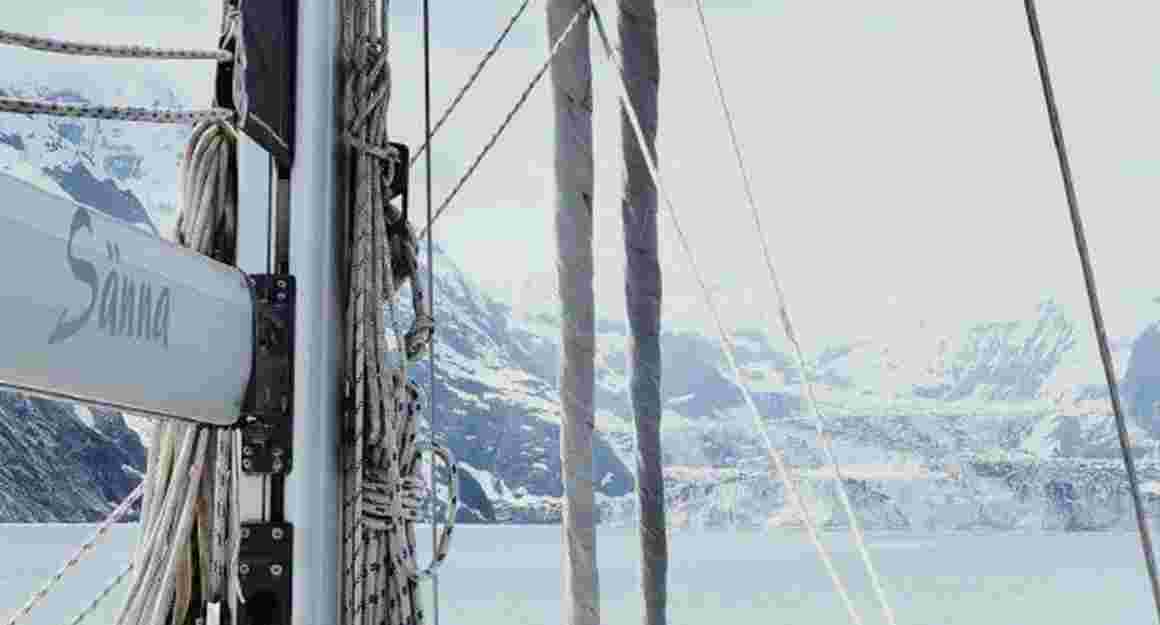
Finally Alaska
And then, two years of glorious Alaska. One highlight of the famous Inside Passage is the Glacier Bay National Park. Glacier Bay is a homeland, a living laboratory, a national park, a designated wilderness, a biosphere reserve, and a world heritage site. It’s a marine park, where great adventure awaits by boating into inlets, coves and hideaway harbours. It’s also a land park, with its snow‐capped mountains, spectacular glaciers, and emerald‐ green forests. From the summit to the sea, Glacier Bay’s wildness is remote, dynamic and intact.
It is possible to enter this fantastic area of sheltered Fjords, wild coastlines, temperate rainforest and rugged mountains with your own boat, as Sänna also did, although access for private yachts is restricted to a certain number. Just outside the National Park, Chichagof Island seems to be nearly as attractive – Sänna even wintered in the sheltered marina of Hoonah under the watchful eyes of the friendly locals, while Marie and Dave flew home to the UK to visit friends and families. About Chichagof, Dave writes the following: „Chichagof is mountainous, thickly forested, remote and wild. The island has the largest concentration of brown grizzly bears than any other place in the world… almost three per square mile. Offshore are the greatest numbers of humpback whales found anywhere and pods of orca whales regularly penetrate the numerous secluded sounds, fast‐flowing straits and beautiful coves. Wolves, deer and powerful bald eagles scour the shorelines searching endlessly for food of some type or other.
Pelican: Gem amidst nothing
And then, right in the middle of this not‐much‐at‐all except high‐peak mountains, there’s the small boardwalk settlement of Pelican. Pelican, believe you me, is like nowhere else you can imagine. Pelican is an infamous‐gem known only to Alaskans and they don’t take kindly to any so‐called travel‐expert looking to ’discover’ the next tourist enclave. There’s no roads in or out of Pelican, there’s no roads at all. There are no motor vehicles, no traffic laws or anything like that, just an amazingly picturesque timber‐township‐built‐onstilts constructed into the mountainside to feed the now dilapidated and ruined fish cannery that’s still crumbling into the sea. The only way to Pelican is by boat and even then, intrepid vessels have to brave the terrifying Inian Pass narrows with twelve‐knot rapids to get even anywhere close. It’s not easy to get to Pelican.”
Of course, they went to Pelican. „We sailed Sänna there from Hoonah as soon as we could. We traversed the Inian Pass Narrows and timed our transit of the rapids for slack‐tide the way the fishermen in Hoonah said we should. It is a wild place. It’s also a beautiful place, there is every example of humankind you could find anywhere just like the wild‐whispers say. In truth, if discovered by unsuspecting tourist the magic would surely be lost. Stories of naked races down the frozen boardwalk in the late‐hours of the night are true. Tales of raw bluegrass fiddles played in their own inimitable style and of bare‐chested dancing on the tables in Rose’s Bar are not lies, nor are the thousand‐dollar‐rounds‐ofdrinks‐ for‐everyone when drunken fishermen not long back from the wild Pacific ring the great‐bell on the bar and fall backwards to be caught by the laughing crowd… and all of this on a Tuesday night. There is a live grizzly bear that sits in the warmth of the outside toilet pit – he watches you take a piss whilst you try and refocus your world through unfocused eyes. The girls, well the girls are friendly enough, you will marry the girl of your dreams if you stay around long enough. The priest and the medicine man, they are exceptionally good friends. Old whisky drinking buddies who constantly argue about the other man’s God.“
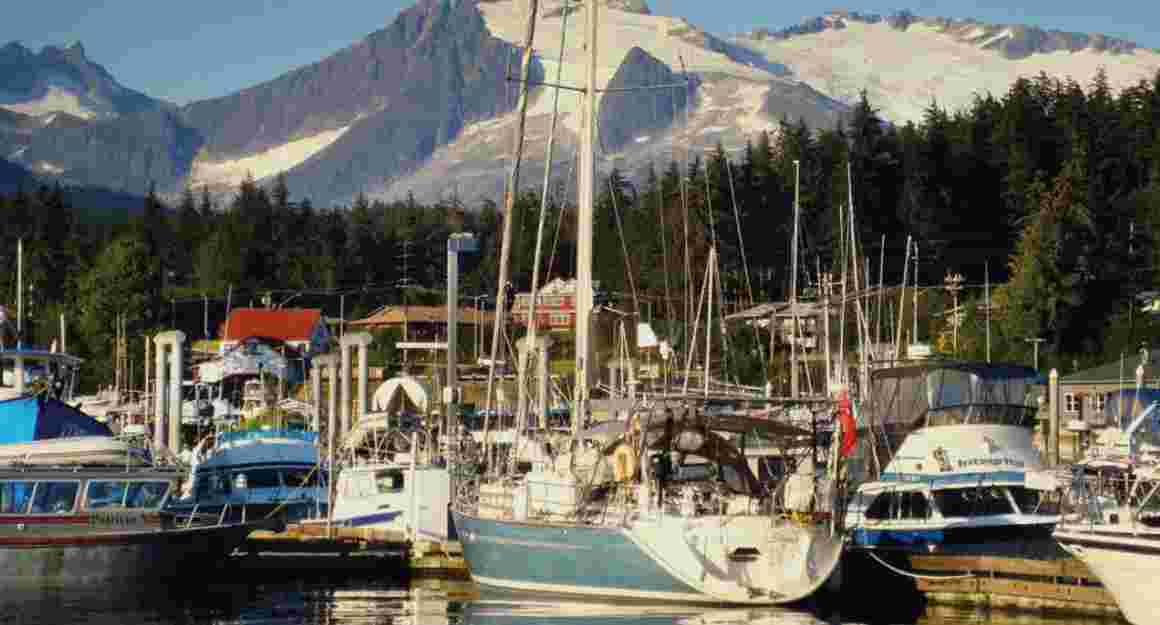
Layover in Elfin Cove
“Elfin Cove is, again, reachable only by boat, by braving those same rapids inside the Inian Pass that take you to Pelican. In fact, Elfin Cove is a good half‐way stop‐off if trying to get yourself to Pelican from Hoonah. But there is a danger that, if you stay long enough in Elfin Cove, you will turn native. That’s what they’re trying to tell you in Hoonah when they say Elfin Cove is full of hippies. What they really mean is they’ve gone funny in the head, but when we sailed Sänna there we didn’t see that. Sure, the folk in Elfin Cove are different but they’ve ’turned native’ in a respectful way, they’re entirely self‐sufficient, they don’t need their TV’s or the Internet and they’ve learned to live with themselves in a way that’s actually difficult to explain. We ourselves, perhaps, understand to some degree because it’s the same type of solitude we experience when making long ocean passages but they experience the solitude as a community rather than an individual level.“
By the looks of it, Dave and Marie have not turned hippie in Elfin. In fact, when we caught up with them, they were sailing south along the US west Coast, headed for – Panama?
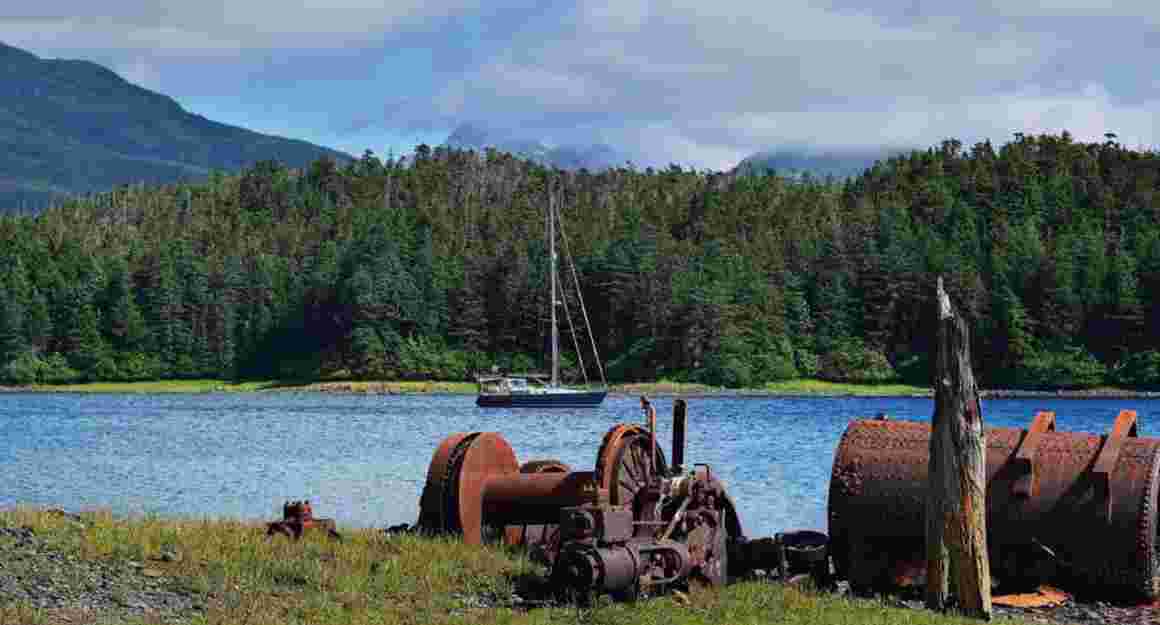
Are you heading for Panama? And then to where?
Dave Ungless: We came north to Alaska from Hawaii so that we could make an attempt to transit the Northwest Passage. I’ve before sailed in high latitudes in a GRP constructed sailboat and although difficult, it would be perfectly possible given acceptable ice conditions that now prevail through global warming. However, continual problems with our Volvo Penta engine made this too high risk… we have now replaced our Volvo with a new Yanmar but had to return south to Port Townsend to get this work done which means we lost another season to make the attempt. Our fall‐back plan is the only other alternative – through the Panama Canal eastwards. To continue southwards past Panama down the west coast of South America is not an option in a sailboat due to adverse winds and the Humboldt current. From there who knows? We never make long term plans these days because they always change.
Are you armed on board?
Dave Ungless: No, we are not armed and being British we are against firearms on board. This has been the subject of intense discussions with Americans and other American boats, which invariably are always armed to the hilt. We see no reason to be armed and have never been in any situation where we have needed weapons. We carry bear spray and a taser for bear protection, neither of which work effectively. Our filming drone works though, bears always flee from a drone… we only discovered that whilst being chased for the second time on Chichagof Island.
What impressed you most in Alaska? Would you ever want to come back?
Dave Ungless: We are heartbroken to leave Alaska. It’s the solitude and wilderness, stunning remote anchorages and incredible landscape. Northern British Columbia in Canada is the same. But we have time limits imposed by US Customs laws relating to the boat which they stretched for us as much as they possibly could but we were running out of sensible time. The only problem is the relentless march of the cruise ships which are ruining and damaging large areas but are unstoppable.
How long have you been voyaging in Sänna up to now?
Dave Ungless: Twelve years and counting.
What are your medium and long term plans if you have any at all?
Dave Ungless: We don’t have any. Our biggest problem is the friends we leave behind and it takes us time to adjust. I’d like to return to the Mediterranean but my wife Marie would like to go into the south Atlantic and that’s probably where we will go.
About Sänna. Why did you buy her, what was the brief for the boat you were looking for then?
Dave Ungless: I was looking for a good ocean going sailboat and had my eyes on an older Oyster and a Swan. But then a good friend of mine who is marine architect and also a surveyor told me about this Bavaria Ocean which was then called Suzerain which he highly recommended. She was lying in Dubrovnik at the time and I’d not really considered a Bavaria. She was and is a good choice, we have had very few problems, mainly rudder bearings that were just plain worn out and were replaced in Borneo.
What were the modifications that you made?
Dave Ungless: We have made numerous modifications along the way. Many to enable essential liveaboard facilities like solar panels, wind generator and a large watermaker. Others to enable long distance ocean sailing such as a furling inner staysail which has saved us a number of times and is a sail we have come to cherish. A must‐have in our opinion so we are now cutter rigged. We have suffered two storm knock‐downs in our voyages so we’ve made some stowing and storage modifications. We already had an inbuilt generator which has been a big bonus. We’ve just begun an internal refit when in Alaska due to easy access to magnificent yellow cedar machined to our requirements.



